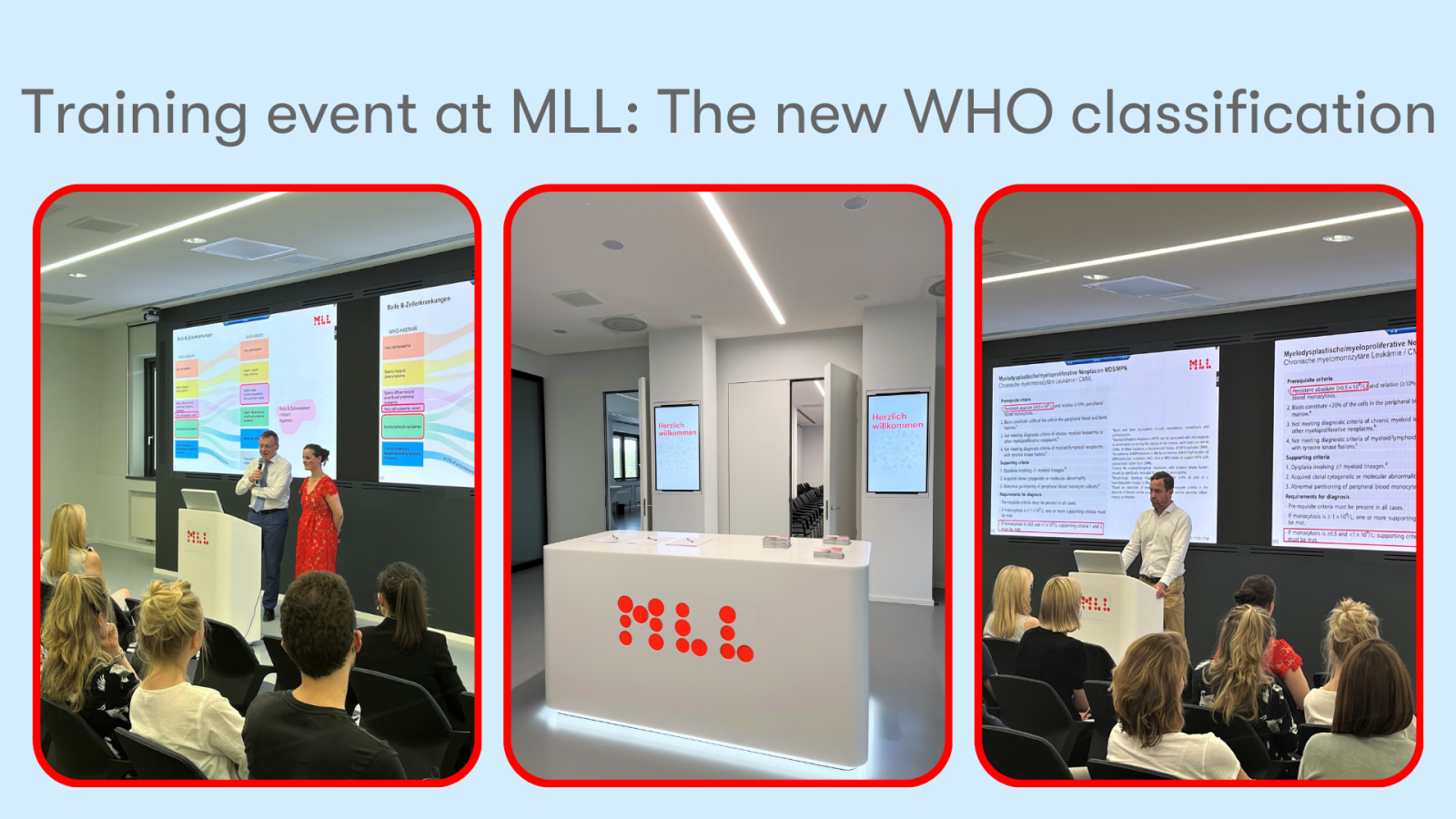Follow-up report on the training course “The new WHO classification” on July 27, 2022, in the MLL Munich Leukemia Laboratory
After the two preliminary publications on the new WHO classification (“The 5th edition of the World Health Organization Classification of Haematolymphoid Tumors”) were recently published in Leukemia (Khoury et al. Leukemia 2022, Alaggio et al. Leukemia 2022), the MLL Munich leukemia laboratory used this as an occasion to organize an advanced training event. There, in four expert lectures, the most important innovations in the classification were summarized and prepared for everyday diagnostic use. The event turned out to be very popular, so that in the end 47 physical and 189 virtual participants from Germany, Austria, and Switzerland participated in the hybrid event.

Increasing focus on genetics
After a brief welcome by Prof. Haferlach, Dr. Christian Pohlkamp began by reporting on the future role of cytomorphology and provided an accompanying synopsis of the changes made to the classification of myeloid neoplasms. Afterwards, Dr. Martha-Lena Müller guided us through the lymphatic component of the new WHO classification from the perspective of immunophenotyping. Then Drs. Bettina Balk and Manja Meggendorfer drew attention to the increasing importance of cytological and molecular genetic findings in the definition of hematological entities, explaining the expanded range of diagnostic procedures required for this. At the end, Prof. Haferlach led a panel discussion on the highlights. Here, both the speakers and the audience reflected on the consequences for everyday clinical practice. Some lively discussion was initiated on topics that included the new genetic definitions for MDS and AML, the management of genetically defined entities such as CHIP and CCUS, and the importance of transcriptome analysis for diseases such as ALL or myeloid/lymphatic neoplasms with eosinophilia and tyrosine kinase gene fusions.
Mutual conclusion
Molecular genetics methods in particular have grown immensely in importance due to the new WHO classification. In this regard, reference was also made to publications on the new scores for risk stratification in MDS (IPSS-M, Bernard et al. NEJM Evidence 2022) and AML (ELN, Döhner et al. Blood 2022), where there is also a growing appreciation of molecular genetic alterations. The MLL has already adapted its diagnostic and methodological spectrum accordingly (see test order). Links to the publications referred to, slides from the event, and other information can be downloaded here.
What's next?
The full beta version of the new WHO classification appeared online on August 3, 2022. The final print version is expected to appear at the end of 2022. Due to the lively participation in the training, a follow-up event is planned on November 16, 2022. In hybrid format, it will delve more deeply into the most relevant aspects of the new WHO classification and also shed further light on the new scoring systems (see above). All information about the follow-up event can be found here (the event takes place in German language).
The author

»Do you have questions regarding this article or do you need more information about the event? Please send me an e-mail.««
Dr. med. Christian Pohlkamp
Internist, Hematologist and Oncologist
Head of Cytomorphology
Head of Customer Care
christian.pohlkamp@mll.com